Seeking solace in a sea of green
Writer: | Editor: Zhang Zeling | From: | Updated: 2024-04-29
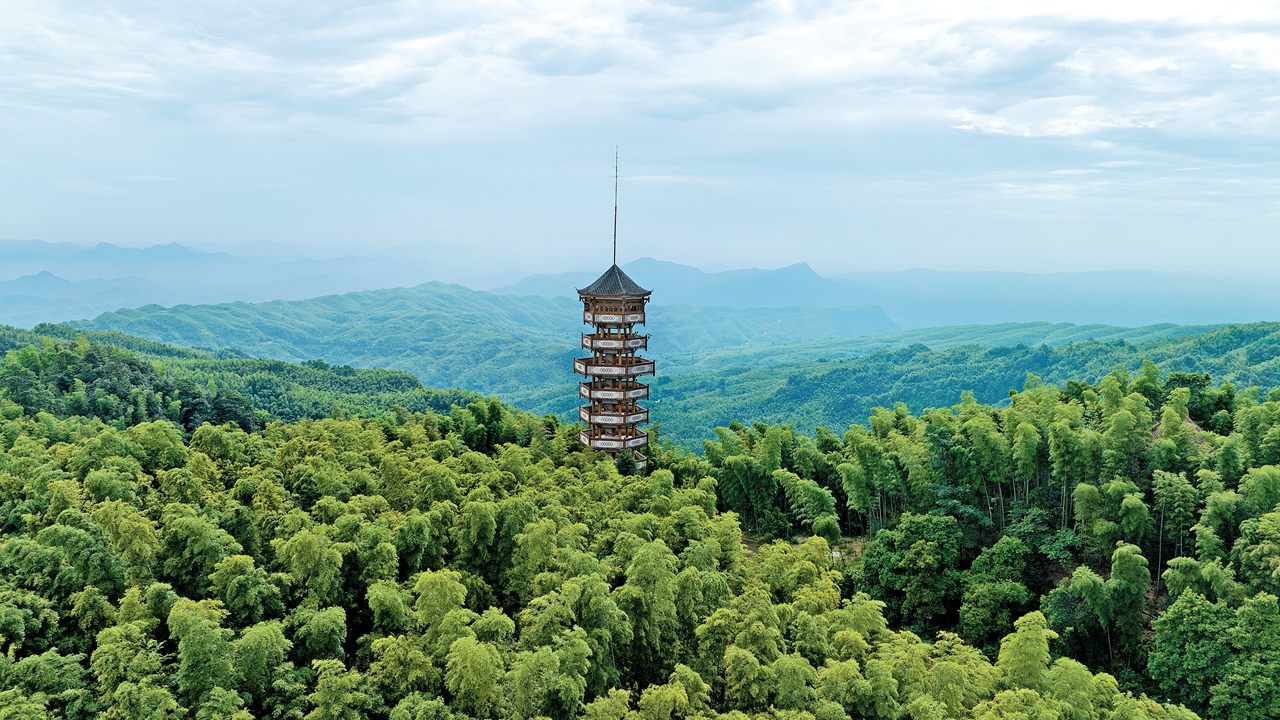
An aerial view of the Bamboo Sea in Yibin, Sichuan Province. Photos by Xinhua
Not as famous as the Leshan Giant Buddha, the water landscapes of Jiuzhaigou Valley, or the cute pandas in Chengdu breeding and research base, a natural bamboo forest in the southern Sichuan city of Yibin nevertheless can make a peaceful getaway for urbanites seeking a tranquil holiday amidst a sea of green.
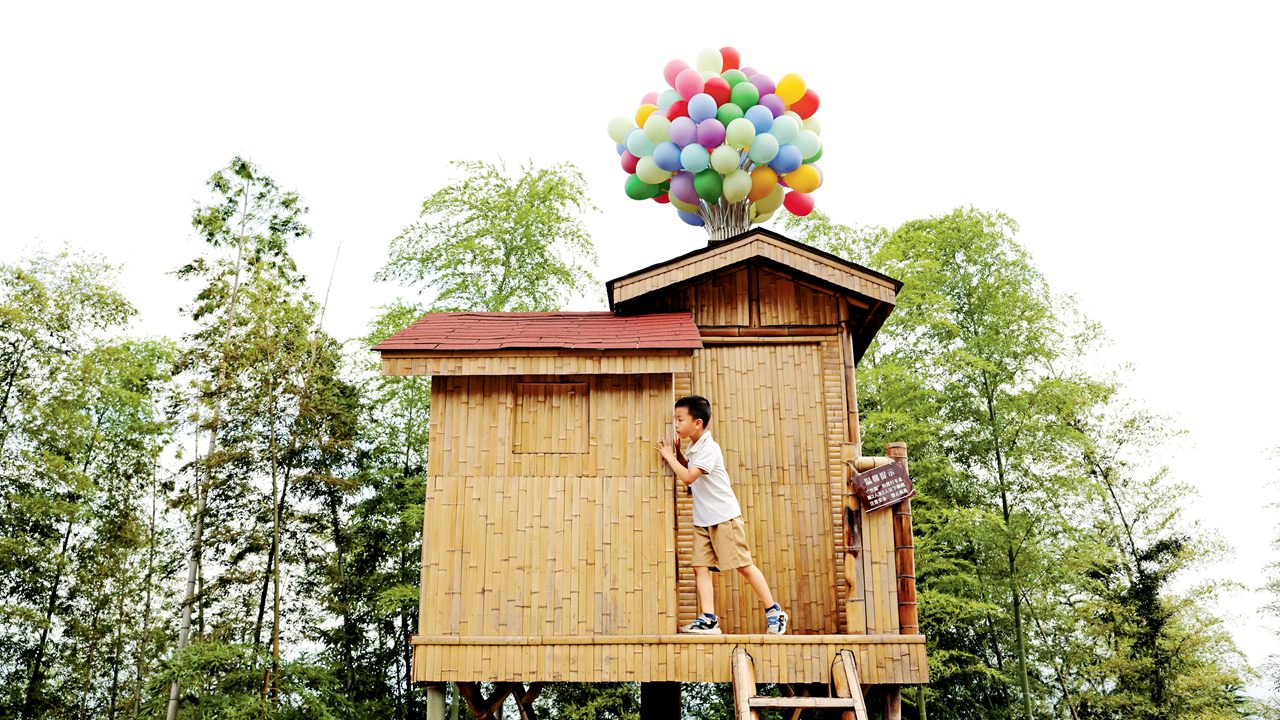
A child is having fun at the Bamboo Sea theme park in Yibin, Sichuan Province.
A major city on the Yangtze River, Yibin has a massive Bamboo Sea in its Changning and Jiang’an counties, an ancient village by the Yangtze with well-preserved architecture from the Ming (1368-1644) and Qing (1644-1911) dynasties, and a time-honored liquor brand called Wuliangye.
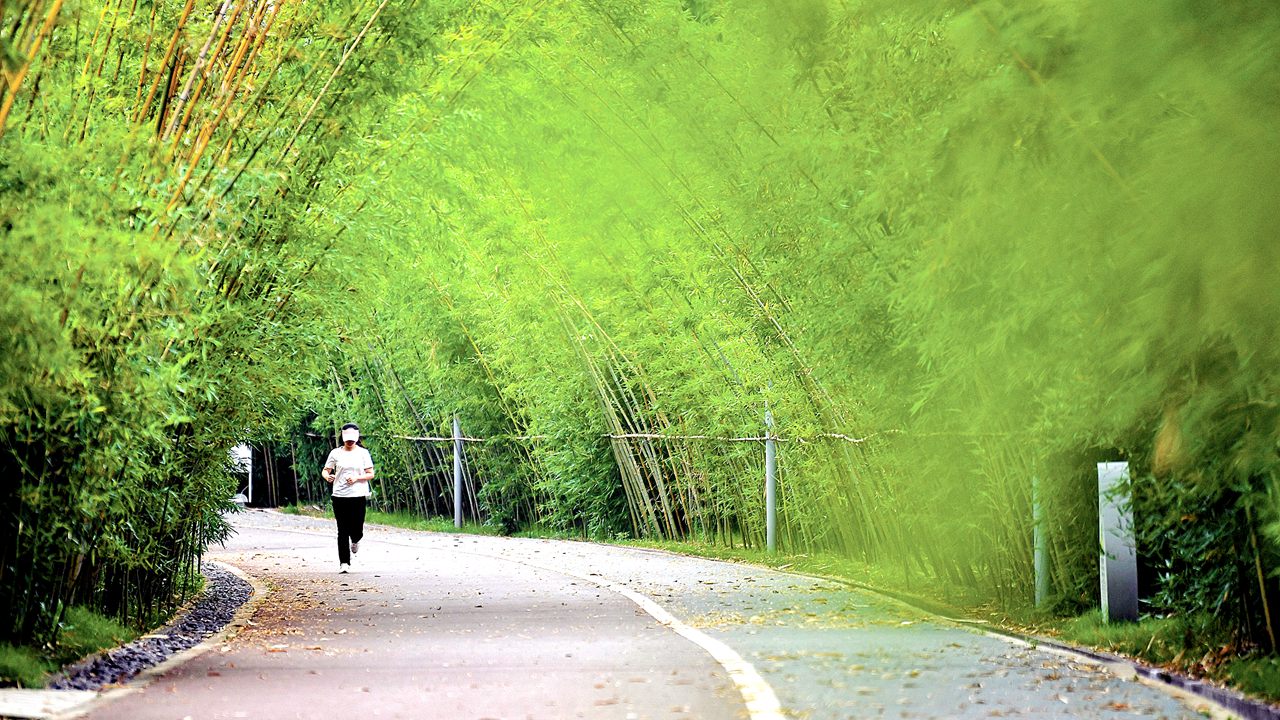
A citizen is seen jogging on the Bamboo Island in Jiang’an County, Yibin City, Sichuan Province.
Bamboo Sea
The 120-square-kilometer Bamboo Sea is the largest primeval bamboo park in China, and its average temperature seldom drops below zero degrees Celsius in winter, when many parts of the country are covered with snow and ice.
Dubbed one of the country’s 10 most beautiful forests, it has been a popular tourist attraction since scenes from the Oscar-winning “Crouching Tiger, Hidden Dragon” were shot there in 2001. Two years later, the bamboo forest got an ecotour rating when it was listed as a world-class bamboo reserve in December 2003, becoming the fourth tourist destination in China to be granted the Green Globe 21 certification.
The Bamboo Sea derived its name from the Song Dynasty (960-1279) poet Huang Tingjian, who, amazed at its vast expanse, called the forest “a sea of bamboo waves.” It consists of over 300 species of bamboo growing in a continuous range of 500 hills. The ocean of green is punctuated by lakes, captivating waterfalls, and lively streams.
At an altitude ranging from 400 to 1,000 meters above sea level, the theme park has an annual average temperature of about 16 degrees Celsius. It can be refreshing to walk through rows of lush bamboo, standing as tall as 10 meters. During workdays when there are not many tourists, people can hear birdsong, streams burbling, and the echo of their own footsteps in the hills.
They can also see waterfalls cascading onto rocks, creating a crystal spray, and view bamboo trees thriving in the narrow clefts of huge rocks. Bamboo shoots are so powerful that they can penetrate and topple rocks as they grow, according to Cao Peng, a staff member of the park’s management.
Visitors also have the chance to feast on bamboo delicacies inspired by the versatile plant in local homestays. The popular dishes on offer include cold bamboo shoot slices dipped in sauce, roasted bitter bamboo shoots, pickled bamboo shoots, soup made from the fungi of the bamboo’s humus, and rice cooked in bamboo tubes.
Visitors can also visit a museum within the park, where they can gain a deeper understanding of the site. Bamboo began to grow in the area some 3,000 years ago. Since ancient times, bamboo has been indispensable to locals, who still use it to build houses, make liquor, forge tools and utensils for daily use, and craft musical instruments and souvenirs.
Chinese people have long admired the plant, seeing it as a symbol of untainted character and perseverance. Bai Juyi of the Tang Dynasty (618-907) related bamboo’s structure — firm, straight, hollow, and divided into segments — to desirable traits such as grittiness, modesty, and openness. Poet Su Shi of the Song Dynasty once wrote: “I would rather be denied meat at dinner than live without the sight of bamboo in my courtyard.”
Chinese scholars have spoken highly of this plant also because of its association with the hermit culture. Hermits in stories lived amid bamboo groves, which provided them with a peaceful and secluded environment.
Several homestays are within walking distance from the museum. Among them is a quiet, two-story hostelry named Forgetting Worries. In addition to all the modern facilities, the homestay with its spacious courtyard is unique for its collection of calligraphy works and paintings.
The entrance ticket for an adult visitor to the Bamboo Sea costs between 60 yuan (US$8.28) and 100 yuan depending on the time of the visit (whether it’s the peak season, a national holiday, or otherwise). For those who tire of walking, an electric cart service is available transporting people along various stops and lookouts, charging a fare of 50 yuan per person.
The park itself is a 30-minute taxi ride away from the Changning Railway Station, easily accessible to Yibin and Chengdu by bullet trains.
Lizhuang Ancient Town
Sitting on the southern bank of the Yangtze in Yibin’s east suburbs, Lizhuang, with a history of 1,460 years, is dubbed “the No. 1 ancient town on the Yangtze.” Its streets, floored with stone plates, are lined on two sides by Ming and Qing dynasty buildings, featuring wooden windows carved with elaborate patterns and fire-proof sloping roofs typically seen in the south of Sichuan Province. The town is home to ancient courtyards, pavilions, and temples and had housed more than 10 top Chinese universities and academies during the Japanese invasion in World War II.
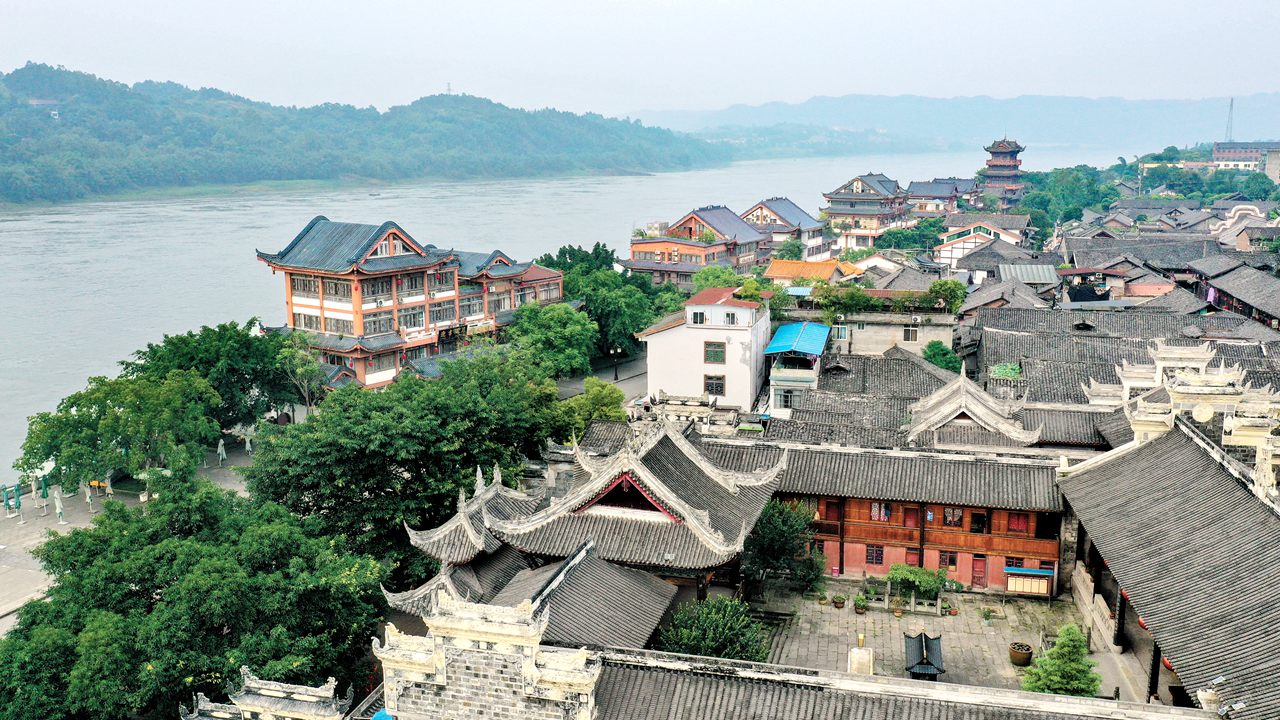
An aerial view of Lizhuang Ancient Town in Yibin, Sichuan Province.
Another attraction of the ancient town is the experience of savoring freshly captured fish from the Yangtze at restaurants hosted on boats perched by the riverbank.
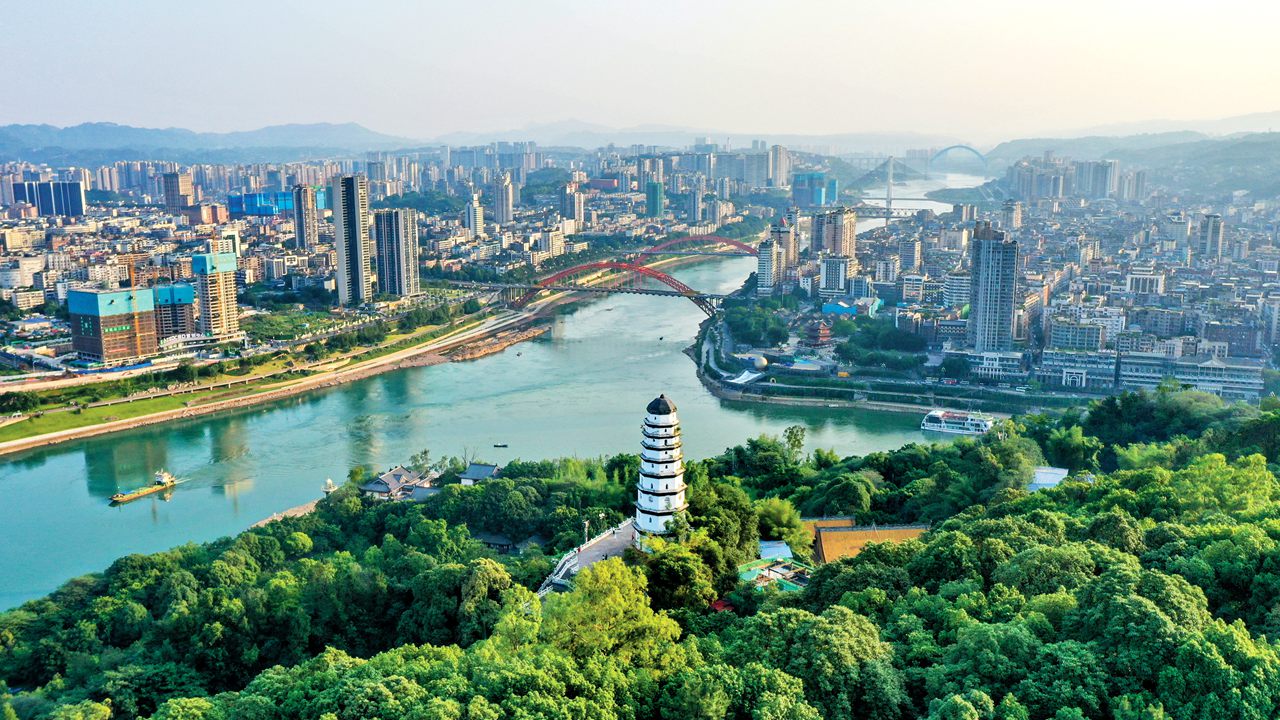
Yibin’s cityscape viewed from the confluence of the Jinsha, Minjiang, and Yangtze rivers.
Yibin is located on the borders of Sichuan, Yunnan, and Guizhou provinces and at the juncture of the Jinsha, Minjiang, and Yangtze rivers, allowing visitors to head to the confluence of the three rivers to enjoy a majestic unobstructed view of the horizon. A white Ming Dynasty tower is perched atop a nearby mountain.
The city, famous for its Wuliangye liquor, boasts a distilling history of over 3,000 years. An ancient cellar in the city is said to have produced the choice liquor for an uninterrupted period of more than 600 years.
Visitors with a low tolerance for alcohol can try a popular street food called “ranmian,” or “burning noodles,” which is similar to Wuhan City’s beloved hot dry noodles, yet with a Sichuan-style variation — served with peanuts and bean sprouts. (China Daily)